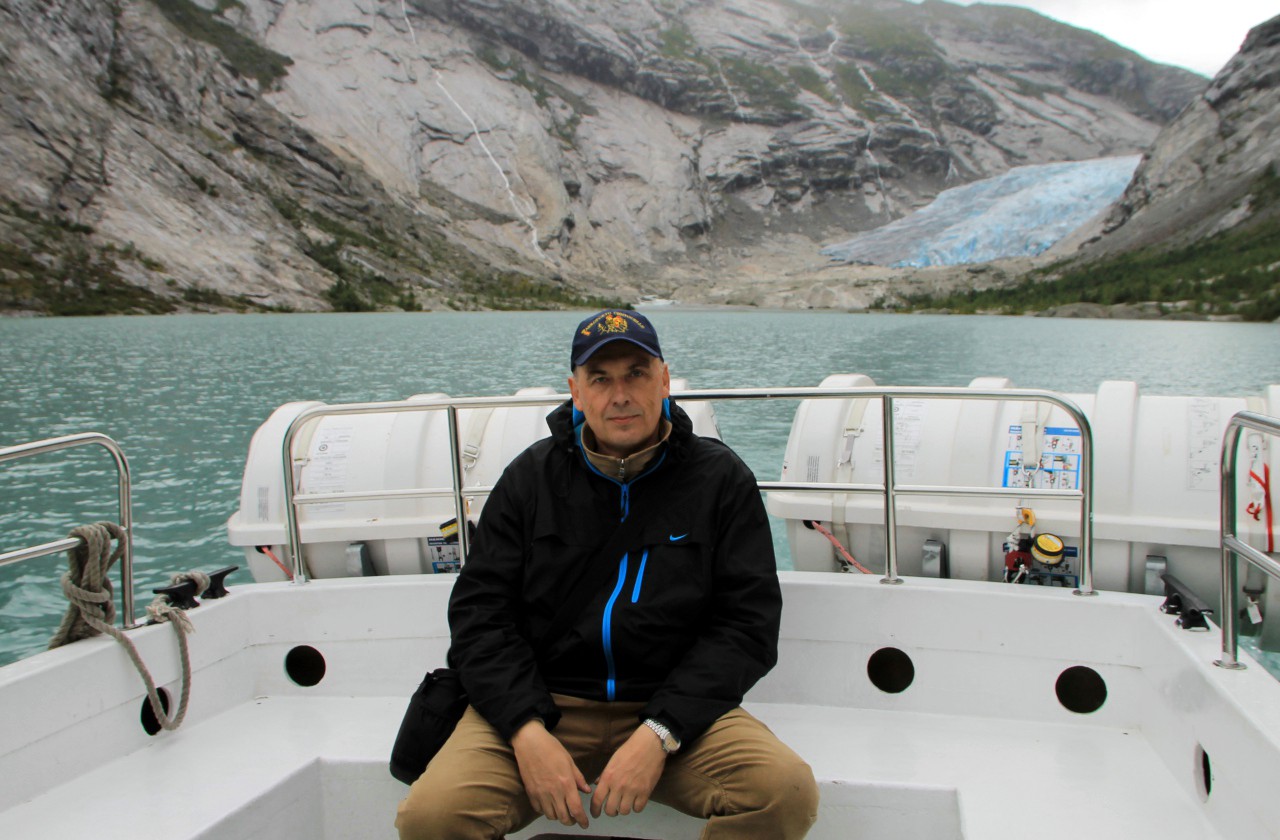Nigardsbreen Glacier River
As I descended from the glacier, I noticed a lot of cracks along its edge. Here, huge blocks are chipped off from the centuries-old ice monolith. Professional guides inspect these cracks on a daily basis, identifying their hazards and limiting the danger zones. The history of the glacier knows several cases of death of tourists from the collapse of the ice.
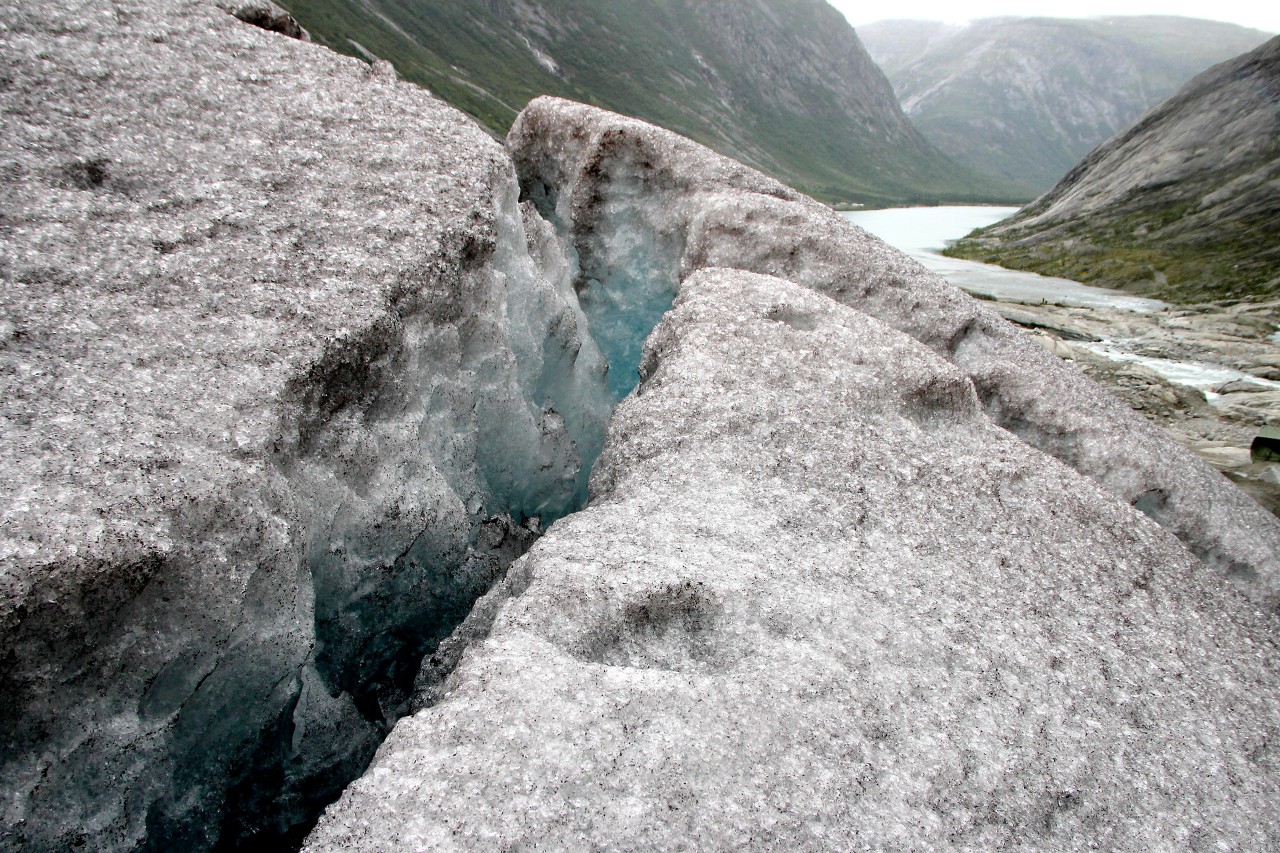
You can see that many streams flow out from under the ice thickness, flowing over smooth rocks, and they undermine the glacier from below, creating a danger of destruction. But why does the glacier melt not only from above, but also under a multi-meter thickness, where temperatures are clearly below zero? An explanation for this can be found in a school physics course: when the pressure increases, the melting point of ice decreases, its thickness creates a huge pressure in the bottom of the glacier, literally squeezing water out of it.
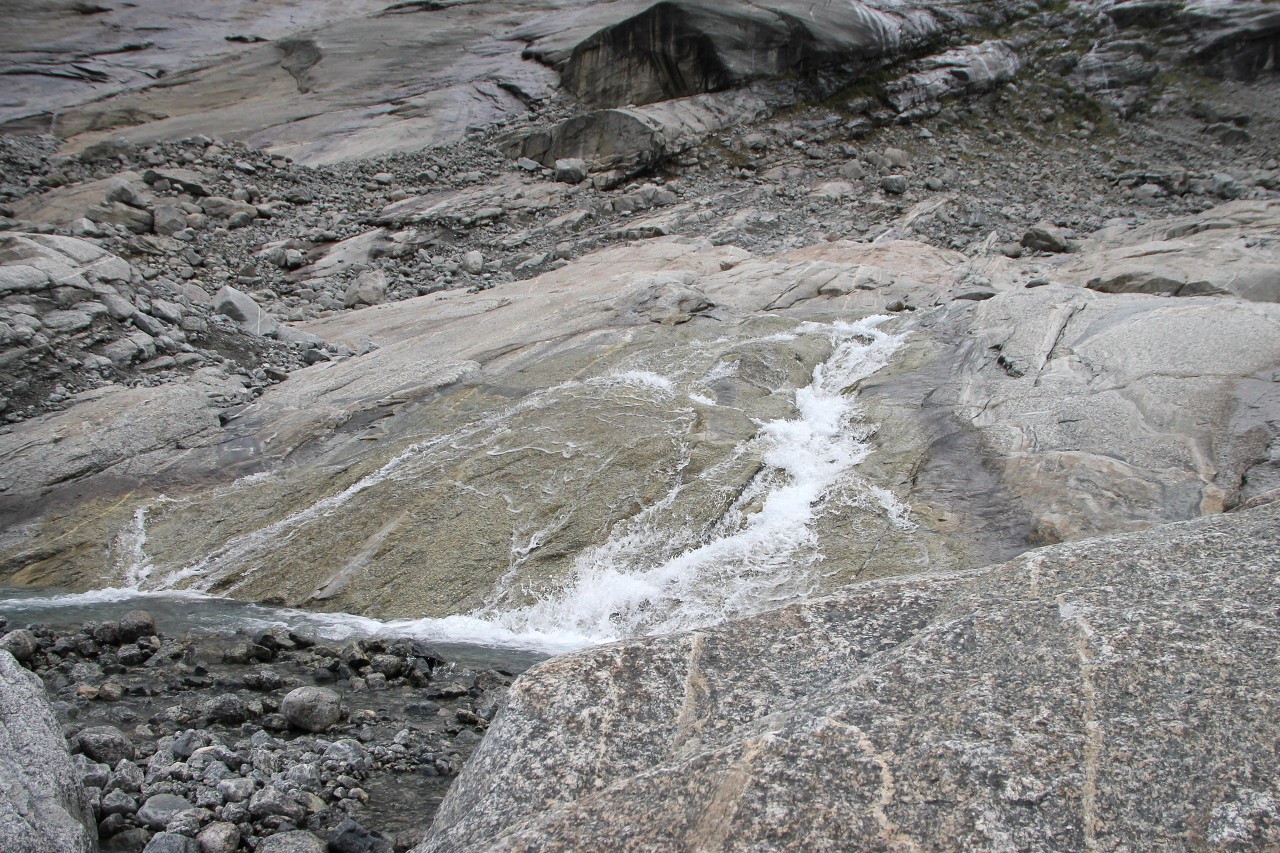
The water in the streams has a blue-green color, this is the result of the fact that the glacier during the movement scrapes off the rocks of the smallest rock particles that get stuck in the ice column. These particles give the meltwater this shade. The water of different glaciers has different shades, from bright green to blue.
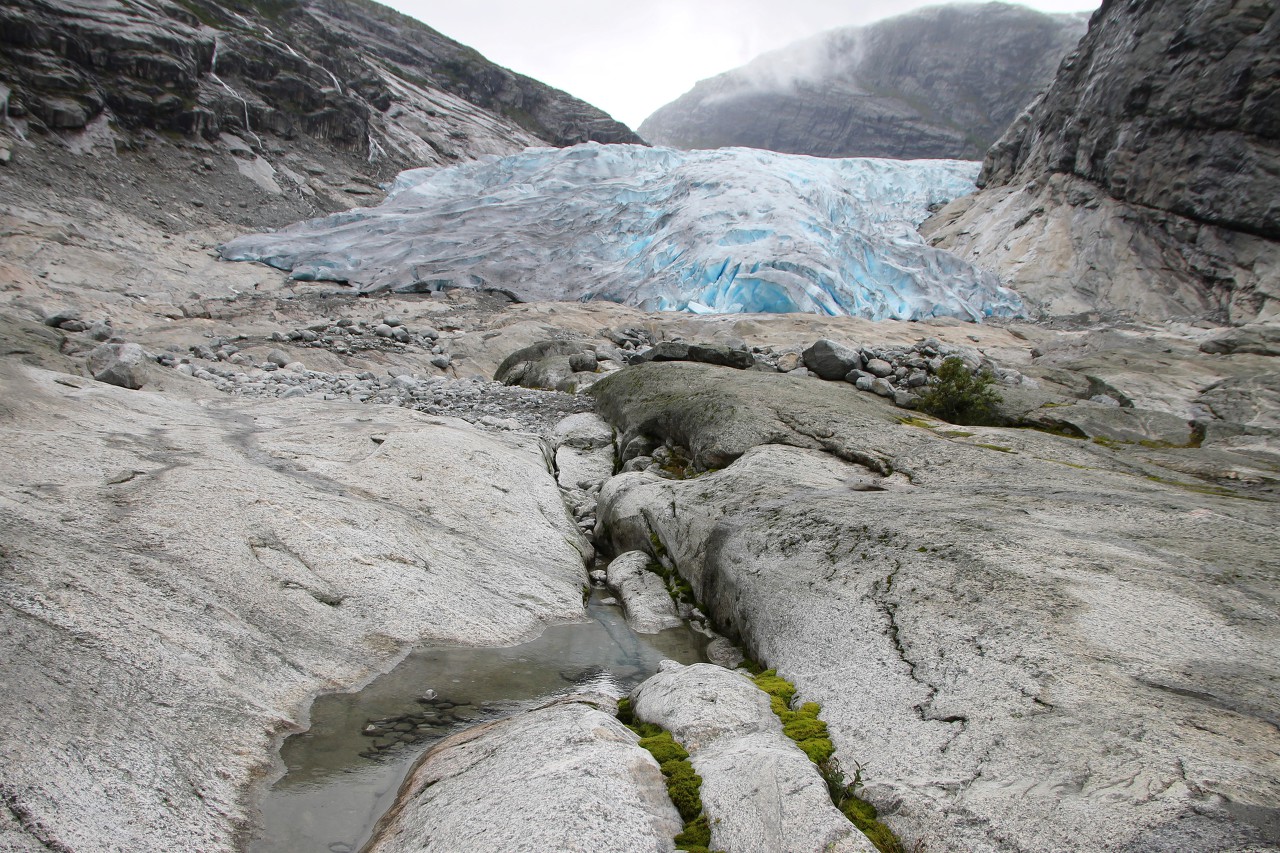
Gradually, the streams merge into a fast river, flowing among huge boulders.
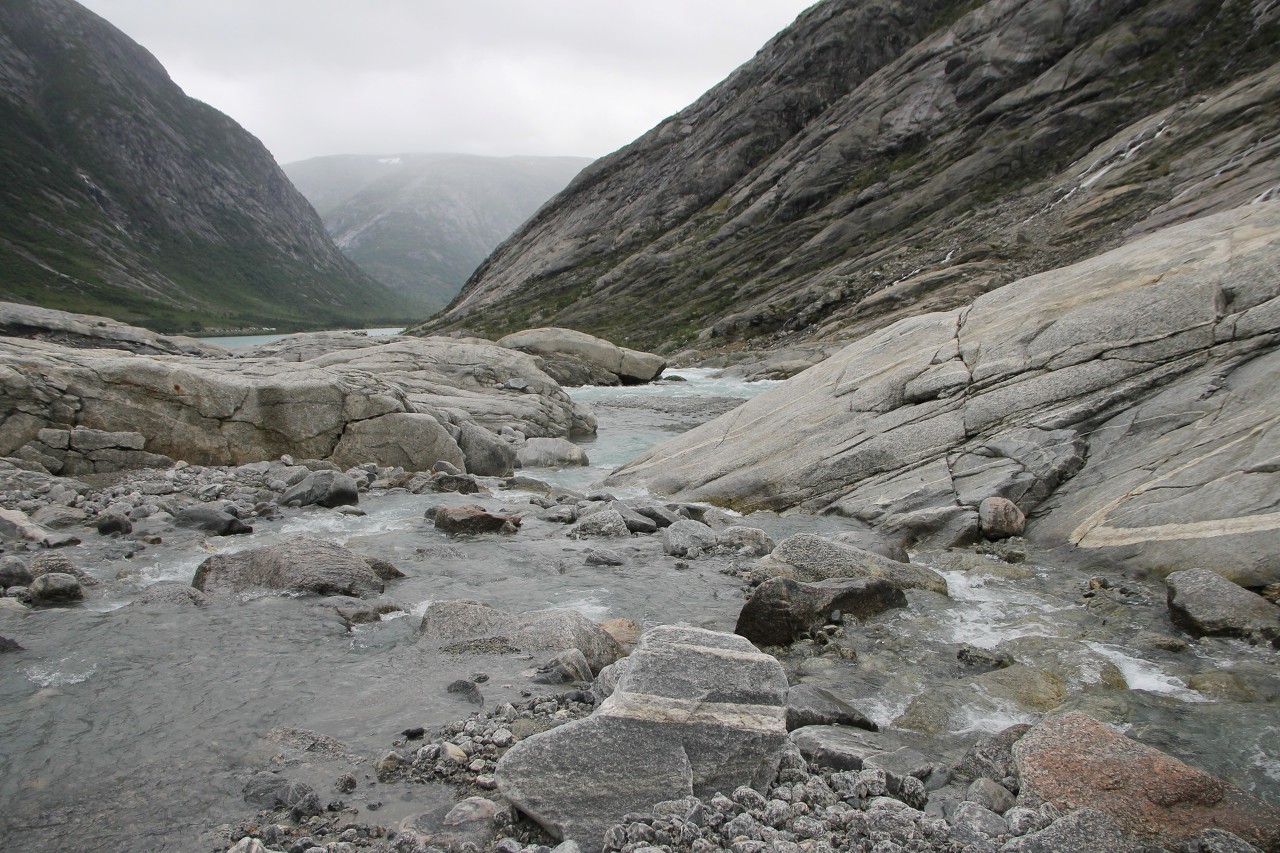
Now it's late summer and there's not much water in the river, but in June a powerful stream is raging here. In 2018, an Austrian tourist drowned in this seemingly harmless river.
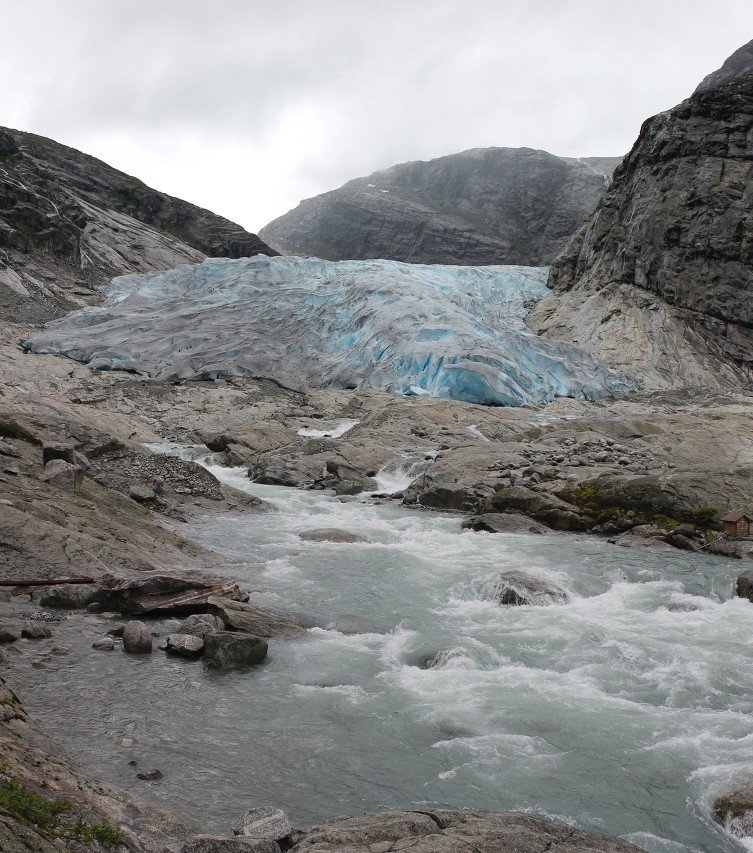
We will stop again to see the blue ice, which is getting harder to reach every year.
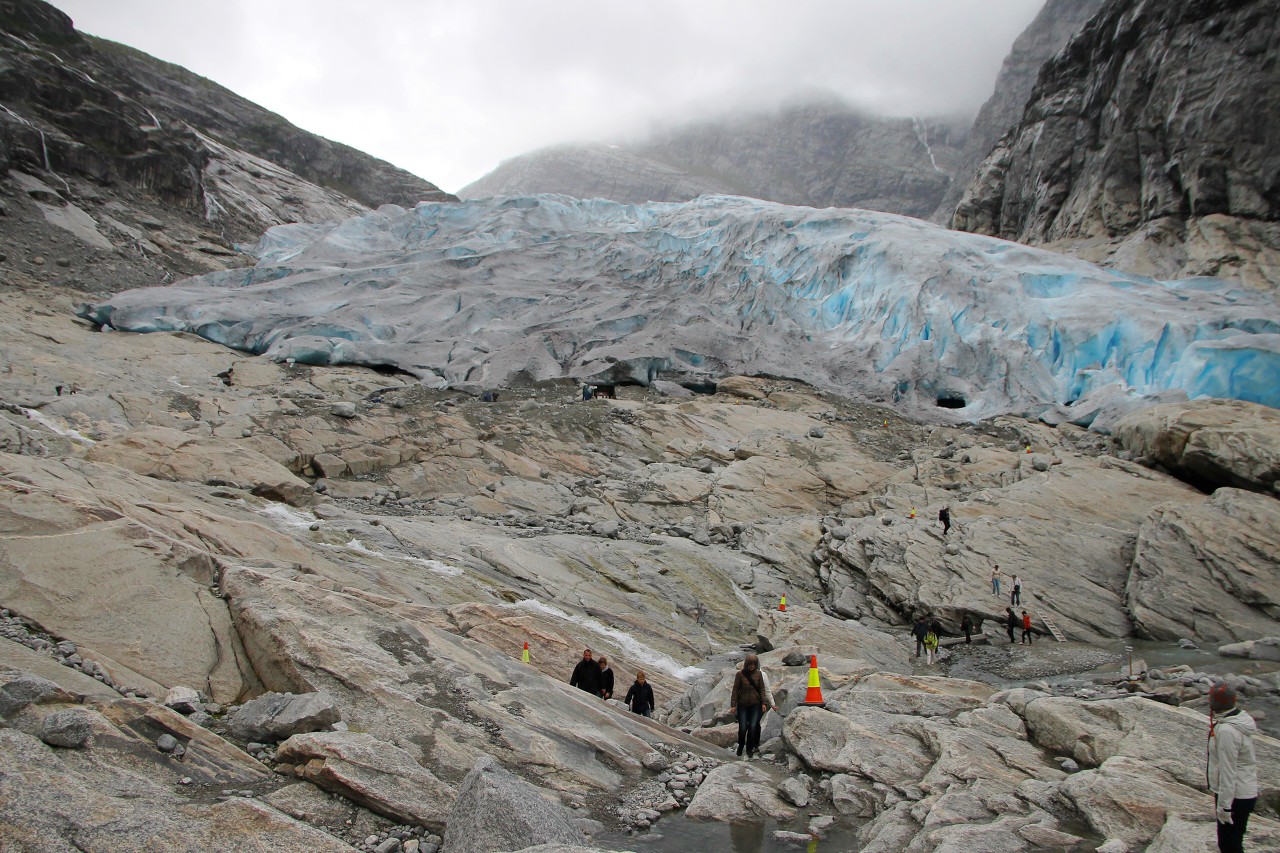
Less than twenty years ago, the glacier approached the water's edge, a hundred years ago it covered the entire lake, and now you need to walk about a kilometer on smooth rocks, this is the result of global climate change.
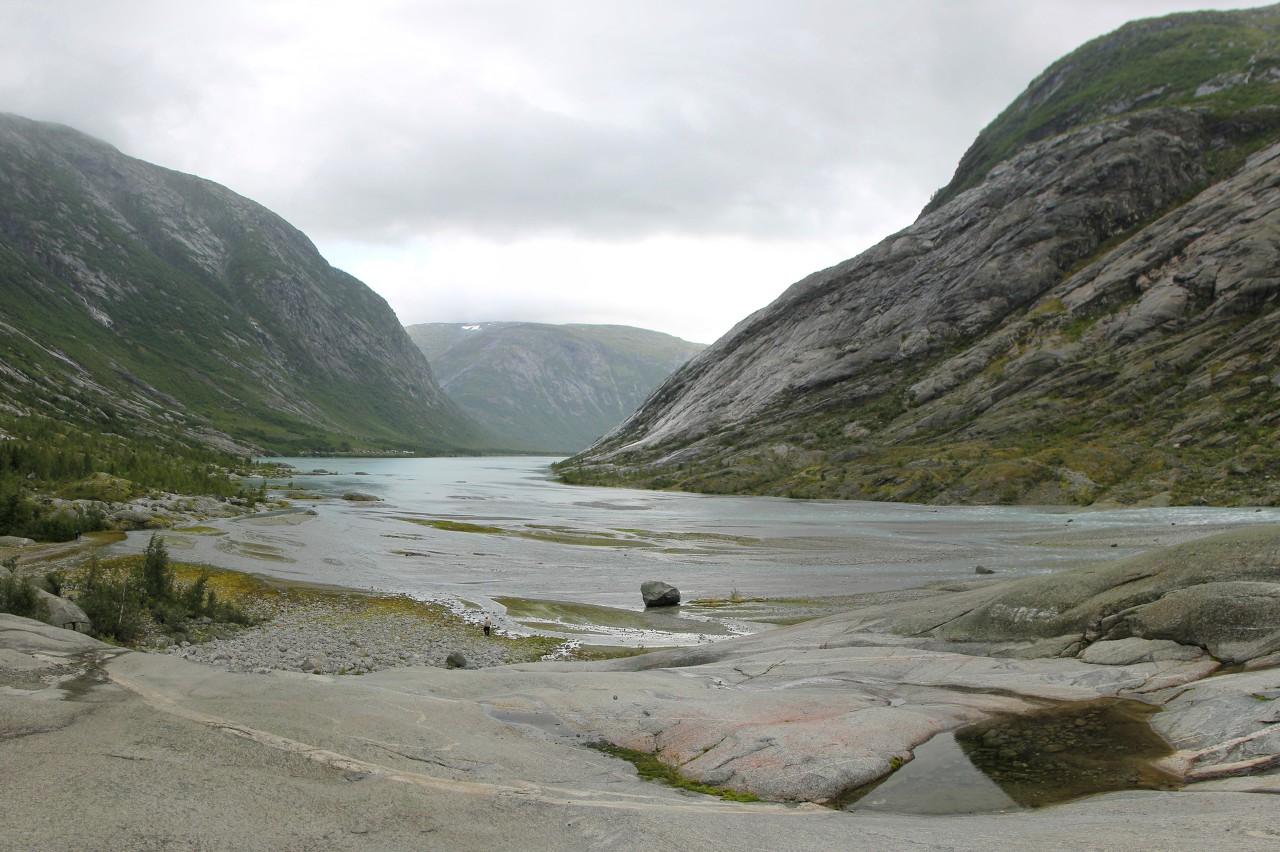
After prolonged treatment with ice masses, the rocks took on the most bizarre shapes, which is explained by the uneven density of rocks.
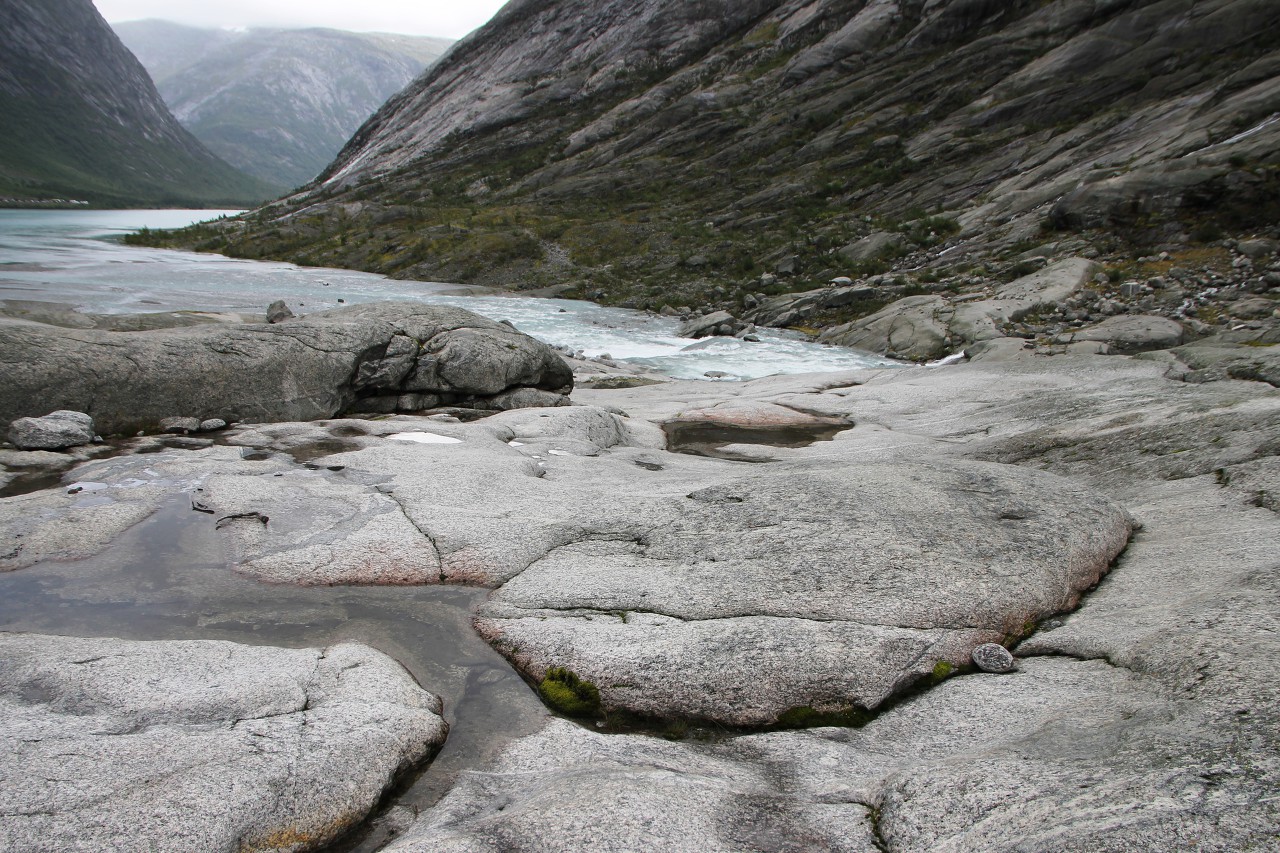
It reminded me of a giant fish stranded on a beach.
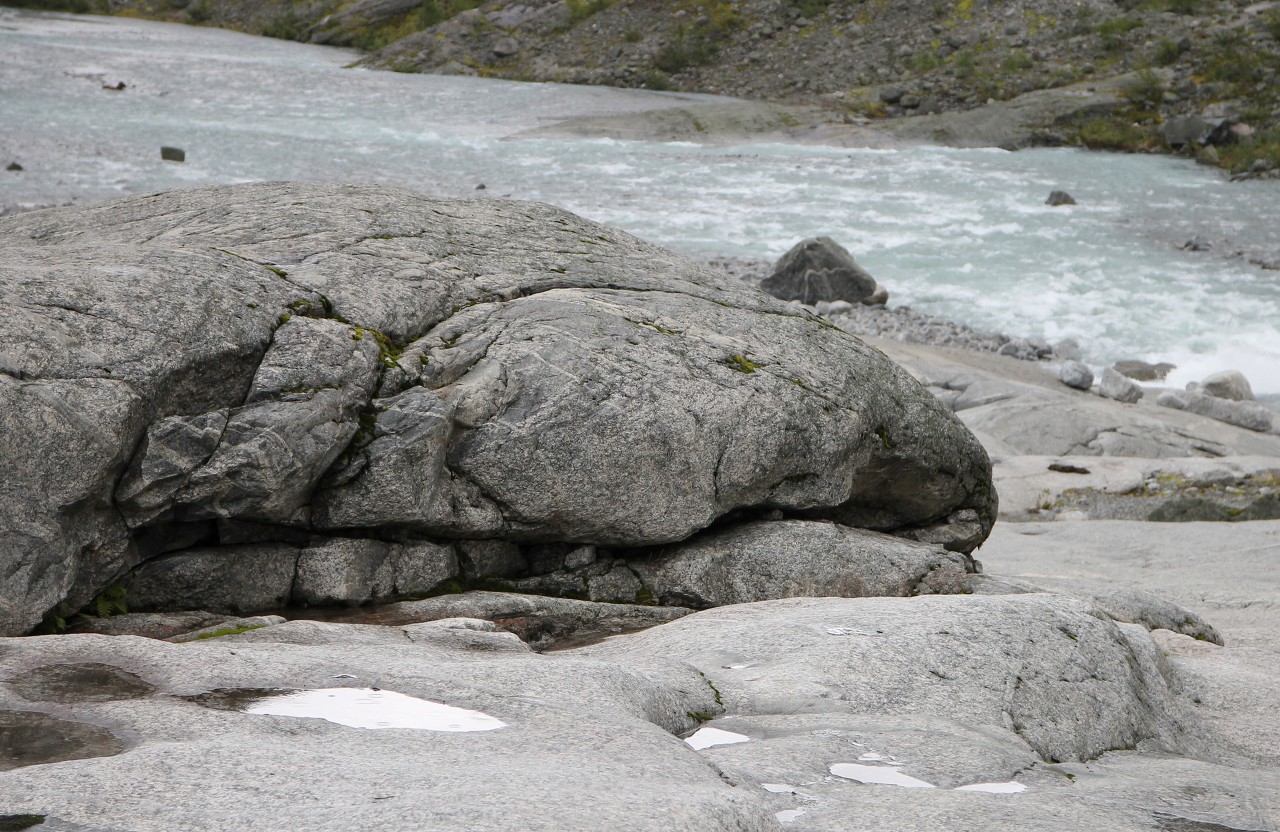
Once again we cross the glacial river on a wooden bridge. From its upper part, you can clearly see how wide the stream is here during the snowmelt period.
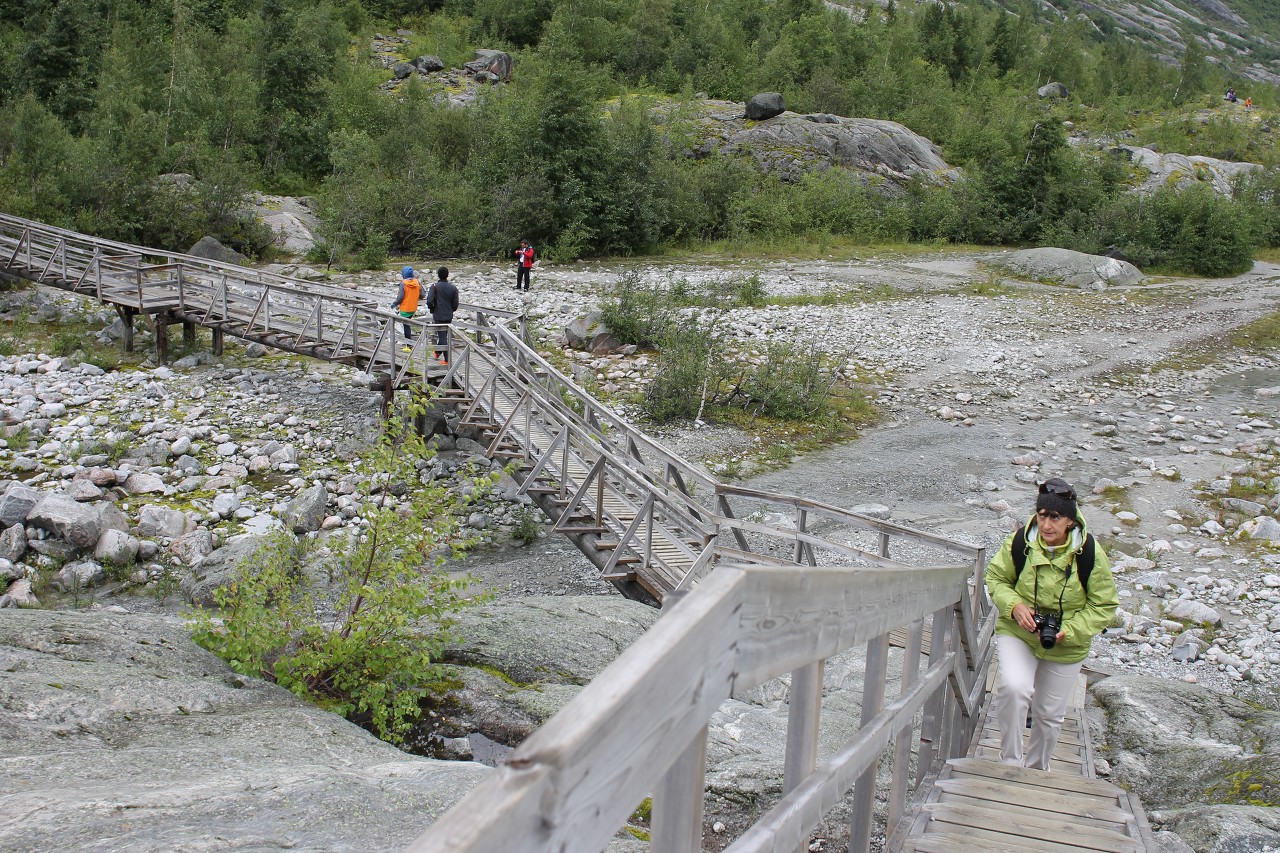
The boat dock is still about half a kilometer away from the lake shore.

On the shallows, the water is milky green, and its color becomes brighter at depth. Surprisingly, while walking on the glacier, it was not cold, and near the water there was a noticeable dankness.
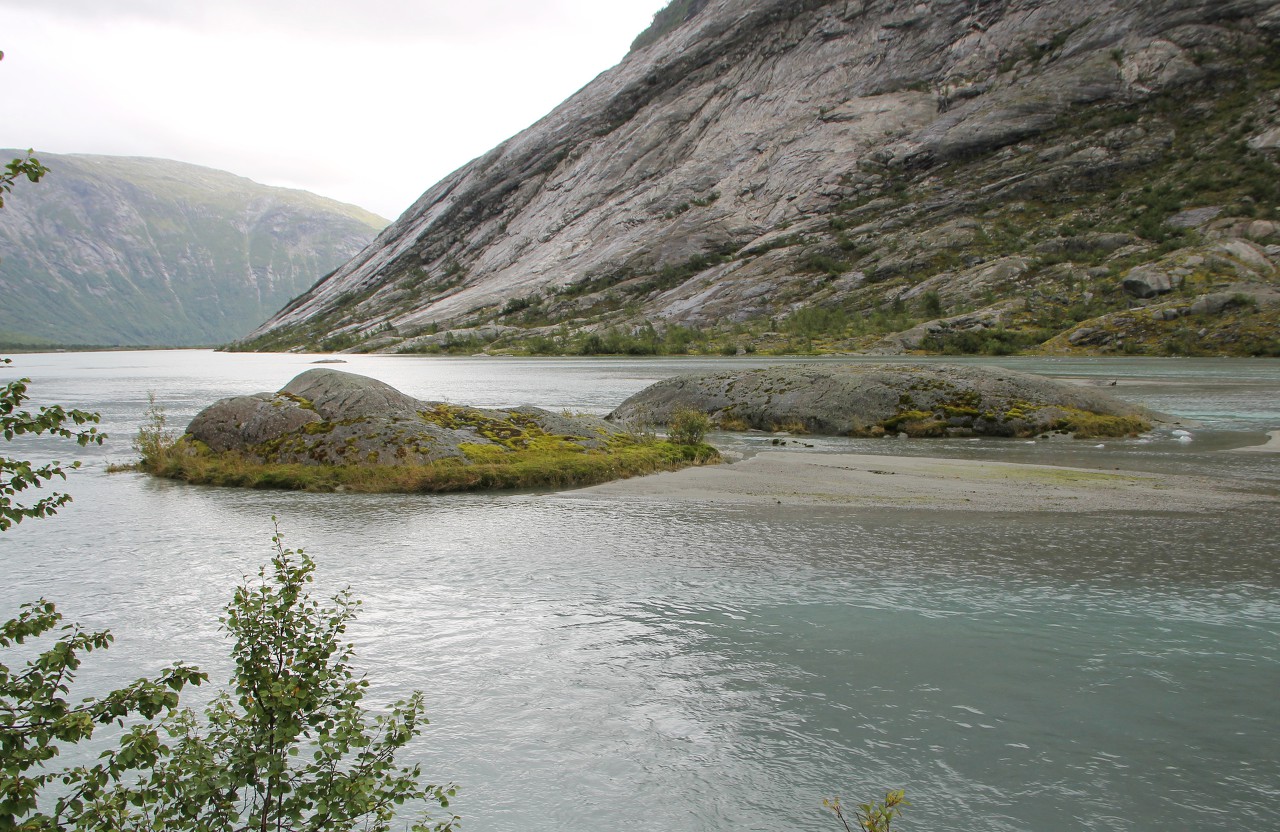
When I got into the boat, I looked at my watch and found that it had taken more than four hours to walk on the rocks and ice, although it seemed to me that they had passed in an instant. Climbing the glacier left the most vivid impressions on this trip.
